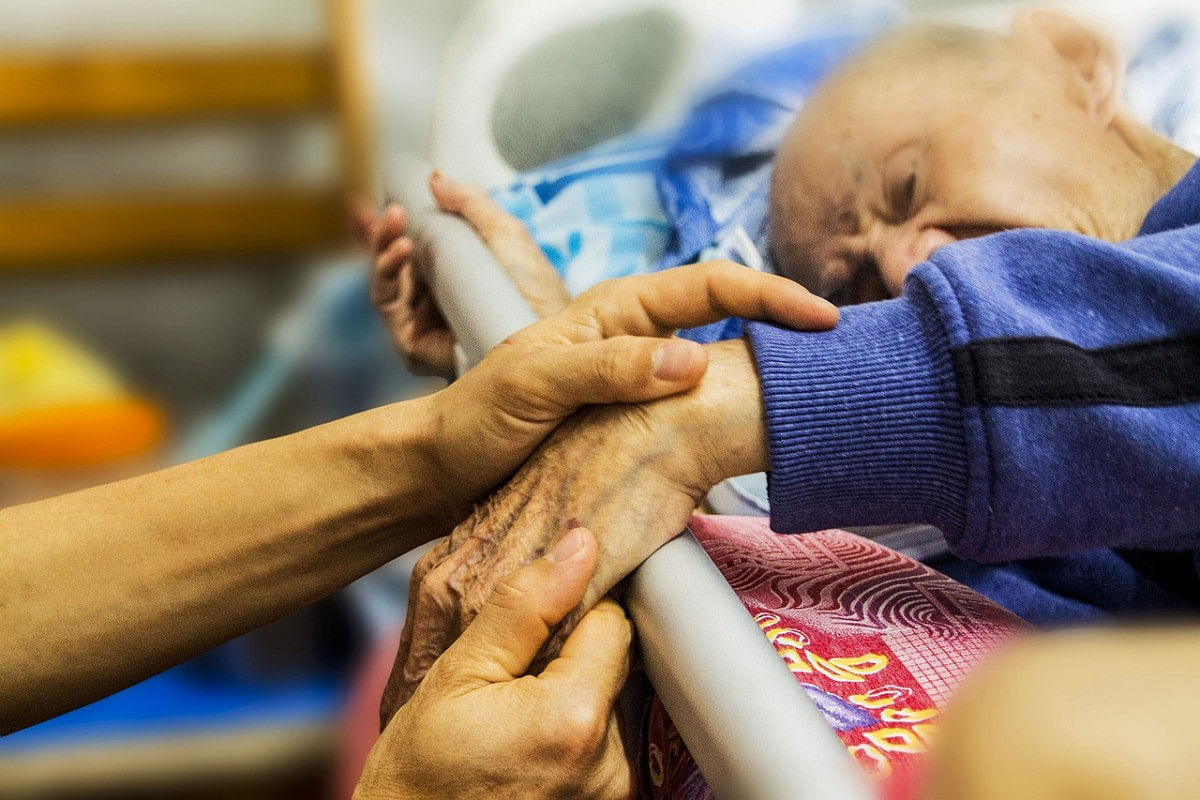When Is Hospice Recommended?
Choosing hospice is not about giving up; it is about shifting the goal of care toward comfort, dignity, and time well spent, which is why families often feel relief once they understand what hospice really offers and when it is appropriate to begin.
Hospice focuses on quality of life when an illness is no longer responding to curative treatments or when the burden of aggressive care outweighs the likely benefit, which means the emphasis turns to comfort, symptom relief, practical support, and emotional and spiritual care for both the patient and the family.
Hospice also organizes care so that people can remain in familiar surroundings whenever possible, which helps reduce stress, preserve routines, and create space for meaningful connections.

What Does “Six Months or Less” Really Mean?
The “six months or less” guideline for hospice is a medical estimate, not a fixed countdown. It reflects a doctor’s clinical opinion that the illness is likely to progress within that timeframe. Some people live longer, sometimes much longer, because hospice care stabilizes symptoms and creates a peaceful environment that reduces stress on the body.
The key idea is that hospice is available when curative treatments are no longer effective or desired, not when life is over. Families are often surprised to learn they can renew hospice services as long as eligibility remains. This flexibility allows patients to receive ongoing care without fear of losing support too soon.
Who Decides Hospice Eligibility?
Hospice eligibility is determined through collaboration between the patient’s doctor and the hospice medical team. They review medical records, evaluate symptoms, and consider overall health trends, such as changes in weight, mobility, and hospitalizations. This process ensures that patients meet the established criteria for hospice care under Medicare or private insurance.
At Anvoi Hospice, this evaluation is handled with compassion and transparency. We understand that deciding on hospice can be emotional, so our team takes time to explain every detail clearly. Families are never rushed, each decision is made with respect, empathy, and full understanding.
Are There Clinical Signs That Point to Hospice?
Certain physical and behavioral changes often indicate that it may be time for hospice. These signs can include severe fatigue, progressive weight loss, recurrent infections, and decreased ability to perform daily tasks. Another red flag is when pain or shortness of breath becomes difficult to control, even with strong medications or medical devices.
For many families, the realization comes when hospital visits become more frequent and recovery from each episode takes longer. Hospice steps in to prevent those cycles, offering in-home medical attention and rapid symptom management that avoids unnecessary hospital trips.
Is Hospice Only for the Last Days?
Hospice is often misunderstood as a service for the final days of life, but in reality, it is designed for the last several months. The sooner hospice begins, the more it can help manage symptoms, prevent emergencies, and provide emotional stability. Early enrollment often means more control, more comfort, and more time to focus on meaningful moments with loved ones.
When hospice is started early, patients benefit from consistent nurse visits, specialized medications, and home equipment that make life easier. Families also have time to learn caregiving skills, connect with counselors, and prepare emotionally, something that is nearly impossible when hospice starts too late.
Can Hospice Begin While Still Receiving Treatment?
Transitioning to hospice does not mean all treatments stop immediately. Many forms of supportive care continue, including oxygen therapy, pain management, and medications that ease symptoms. The main difference is that hospice treatments focus on comfort rather than curing the disease.
At Anvoi Hospice, patients can discuss which medications or therapies they want to keep. For example, a person with heart failure might continue diuretics to reduce swelling or shortness of breath. The goal is to maintain comfort and dignity, never to take away care that improves quality of life.
When Dementia Progresses, What Should Families Watch For?
Dementia presents unique challenges because decline is gradual and unpredictable. Families often wonder when the “right time” for hospice is. In general, hospice may be appropriate when the person has lost the ability to communicate meaningfully, eat independently, or recognize loved ones. Frequent infections, weight loss, and significant weakness are also key signs.
Hospice provides specialized dementia support, including strategies to reduce agitation, improve comfort, and assist caregivers. For families coping with this disease, hospice becomes a compassionate partner in navigating the emotional toll of watching a loved one fade away.

How Do Heart and Lung Conditions Fit In?
Patients with advanced heart or lung disease often reach a point where symptoms persist despite optimized medical treatment. Signs that hospice could help include shortness of breath even at rest, chest pain, swelling of the legs, or frequent emergency room visits for fluid buildup. Hospice can intervene with medications, oxygen, and careful monitoring to stabilize these symptoms at home.
Chronic obstructive pulmonary disease (COPD) is another common reason for hospice. When walking across a room leaves someone gasping or requiring continuous oxygen, comfort-focused care can make an enormous difference in daily quality of life.
What About Cancer Journeys?
Hospice becomes appropriate for cancer patients when treatments stop controlling tumor growth or when side effects outweigh potential benefits. The focus turns to managing symptoms such as pain, fatigue, nausea, or loss of appetite. Hospice professionals ensure that patients can rest, eat comfortably, and spend time with loved ones instead of in medical facilities.
For those in the later stages of cancer, hospice helps restore a sense of control. Instead of waiting for the next hospital admission, patients can choose how they wish to spend their time whether it’s at home, outdoors, or with family gathered nearby.
Does Frequent Hospitalization Mean It Is Time?
Frequent hospitalizations are one of the clearest signs that hospice could be beneficial. If a patient is hospitalized multiple times within a few months for similar issues, it may be time to consider a more stable, comfort-centered plan. Hospice focuses on proactive management, preventing emergencies by addressing symptoms before they escalate.
By working closely with families and providing 24-hour phone support, hospice teams can often prevent hospital trips altogether. This allows patients to rest comfortably in their own homes while receiving expert care.
How Caregiver Burnout Factors In
When caregivers feel exhausted, anxious, or uncertain about what to do next, hospice can provide a much-needed safety net. Caregiving for someone with a terminal illness is emotionally and physically draining, and no one should have to face it alone.
Hospice provides respite services so caregivers can take breaks without guilt. Education, emotional counseling, and social work support help families stay strong and organized, ensuring that the patient’s comfort does not come at the expense of the caregiver’s health.
Is Pain a Reason To Consider Hospice?
Pain that becomes difficult to control is one of the most common reasons to explore hospice. The hospice team specializes in advanced pain management that combines medication with non-drug interventions such as positioning, relaxation techniques, and gentle massage.
Effective pain control transforms the experience of serious illness. Patients often find they can sleep better, enjoy food again, and interact more with family once their pain is managed properly.
What If the Person Is Not in Pain?
Even if pain is not present, hospice can help manage other distressing symptoms such as breathlessness, anxiety, insomnia, or digestive problems. These issues can make daily life difficult and often go untreated until hospice begins.
Hospice also provides spiritual and emotional counseling. It helps patients come to peace with their condition and assists families in coping with anticipatory grief, ensuring everyone feels supported through the process.
Cultural and Personal Preferences Matter
Every family approaches end-of-life care differently. Some value spiritual traditions, while others focus on medical or emotional priorities. Hospice honors these differences through personalized care plans that reflect each patient’s beliefs and cultural background.
Anvoi Hospice’s team listens closely to what matters most, whether that means maintaining certain rituals, including specific foods, or creating space for family gatherings. Respect and dignity are at the core of everything hospice does.
Ready To Explore Your Options?
If you are beginning to wonder whether hospice might be right, reach out to Anvoi Health today. There is no pressure or commitment, just an open conversation about your needs and values. The earlier you call, the more support you can receive. Compassionate care starts with understanding. Contact Anvoi Hospice to discover how hospice can bring comfort, dignity, and peace to your family’s life.









